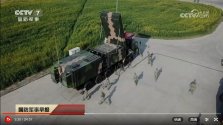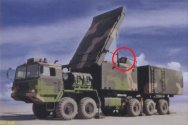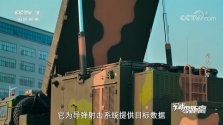And your source for this is?
Source: Trust me bro.
And your source for this is?
My guess is the point of HQ-22 is cruise missile defense. Cruise missiles like the JASSM and Tomahawk are much easier targets than fighter jets for many reasons. They don't make any evasive maneuvers, are subsonic, have little-to-no ECM, don't drop decoys, etc... Thus if you need to defeat a lot of cruise missiles it makes sense to have a lower end long-range air defense system. An all HQ-9 approach would be wasteful at a national scale, especially in a country size of China.Actually I am curious what are the relative sizes of this smaller missiles to the HQ-22 as wouldn't these smaller missiles currently creep into the role of the HQ-22 assuming they are shorter ranged but more maneuverable and potentially cheaper missiles bar the difference in guidance between the HQ-9 and HQ-22?
Take all claims of interception with a pinch of salt. Both ways.All Chinese destroyers have combined L-band and S-band AESA radars. With missiles better than S-300.
Much the same technology is available in the land based HQ-9.
Russia claims to have intercepted Storm Shadow cruise missiles. So I doubt the same thing would not happen to LRASM when facing Chinese air defense systems.
Nah, by now it should be the expectation that chinese SAMs like say the HQ-22 or HQ-9 can intercept missiles like LRASM.Take all claims of interception with a pinch of salt. Both ways.
Subsonic missile like LRASM can be intercepted by hq-17. But that is not how it works.Nah, by now it should be the expectation that chinese SAMs like say the HQ-22 or HQ-9 can intercept missiles like LRASM.
Although numbers for chance of interception etc. we don't know, and this number isn't one that doesn't move (EW conditions, weather etc.)



C-Band 10000 TRM is very significant, especially if it is GaN. That is 14 times the collection area, 10 times the power and 6 times the gain compared to a 5th gen fighter's radar. That is 5.3 times the range against targets of the same RCS. The tracking range against stealth aircraft should be over 120 km even head-on.I was one of those who think HQ-9B would retain the old configurations namely PESA array. But this image changed my mind in instant. It's a legit AESA engagement Radar. So i stand corrected.
View attachment 113492
Notice the lack of Feed shroud on the back of the antenna cab. This was present on older HQ-9 engagement radar. Circled in red.
View attachment 113493
In place of the feed shroud there is a small cabin which i think the cooler which provide the air conditioning for the electronics and the TRM's inside antenna.
View attachment 113494
Some speculations i did, is the Radar would likely to have some 10000 TRM's but this is my assumption based on older HQ-9 which have Type-305 Early warning radar as organic part which signify that the radar is more specialized fire control radar. If it works as fire control, the antenna beamwidth must be about 1 Degrees, the number of TRM can then be determined as 10000 using simple equations one can find in "radar handbook 3rd edition" and the frequency is about 7 GHz the lower end of the C-band. The power can then be gleaned from the methods of cooling.
Oh and source, well i found this interesing Chinese channel which specifically talks about HQ-9B engagement radar.
Too bad i cant speak mandarin. Nonetheless the presenter of the show seems to work on some TRM's under the microscope.
